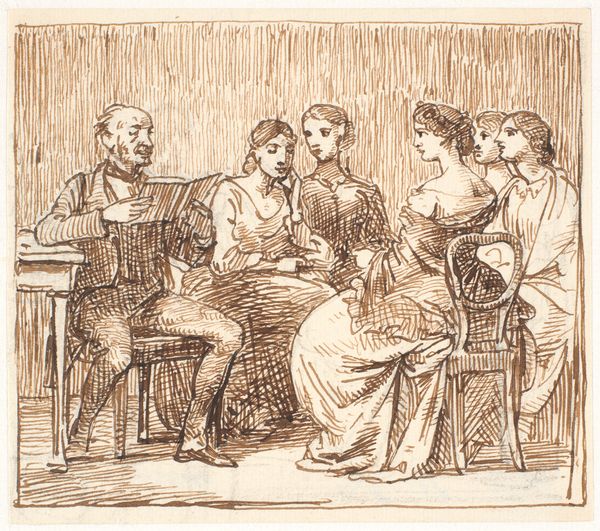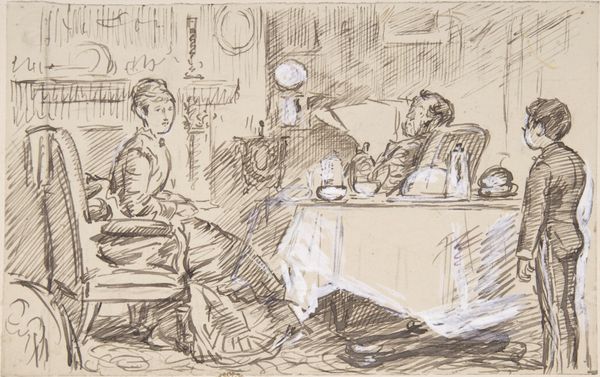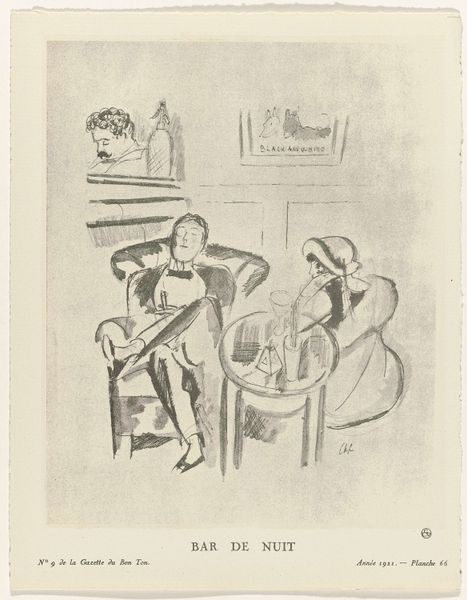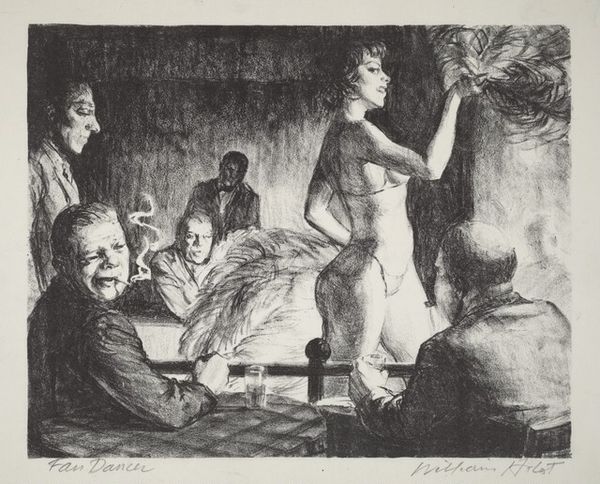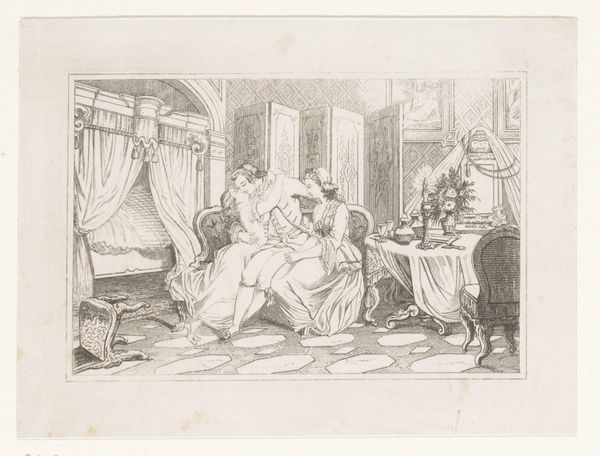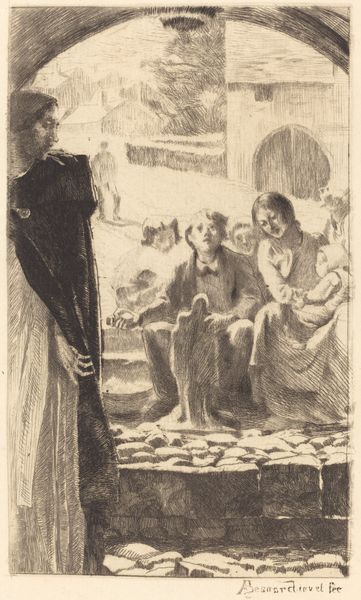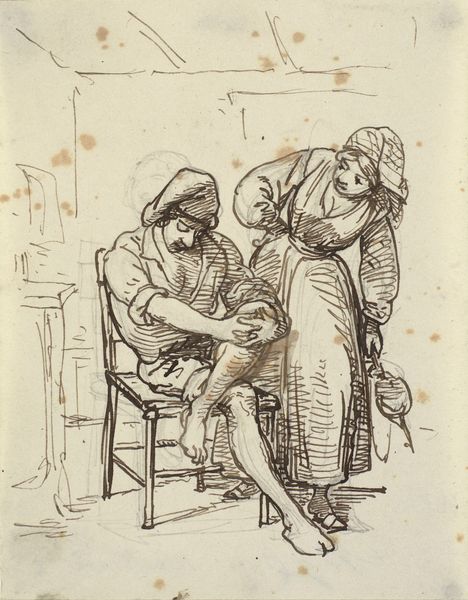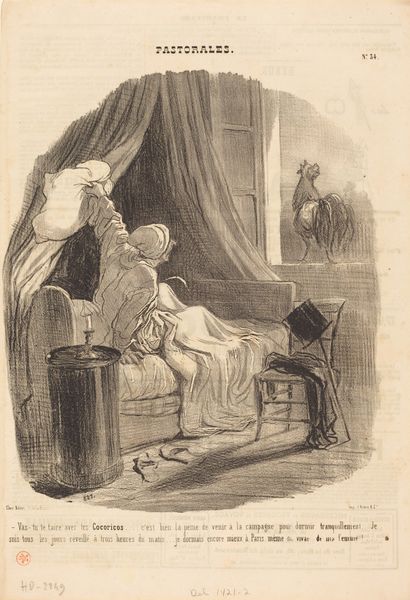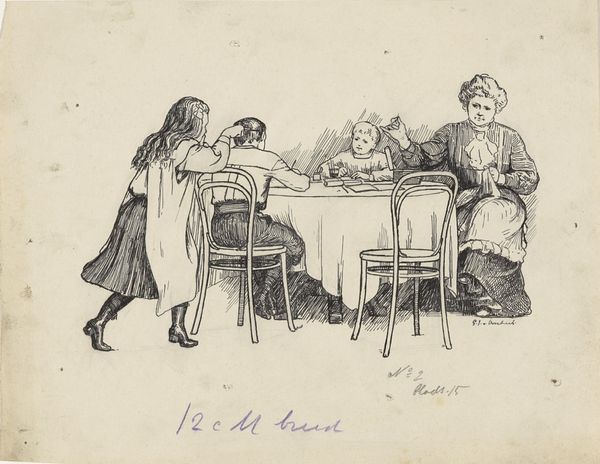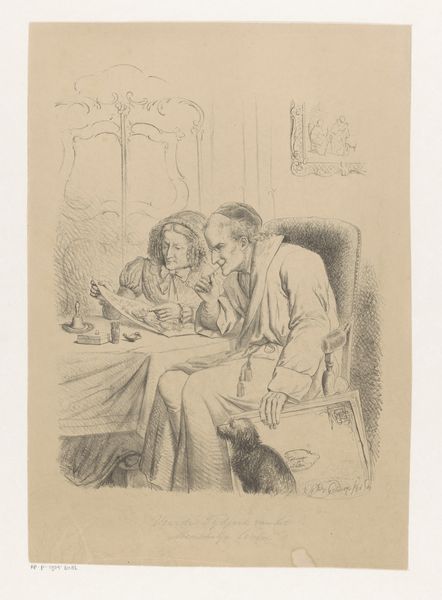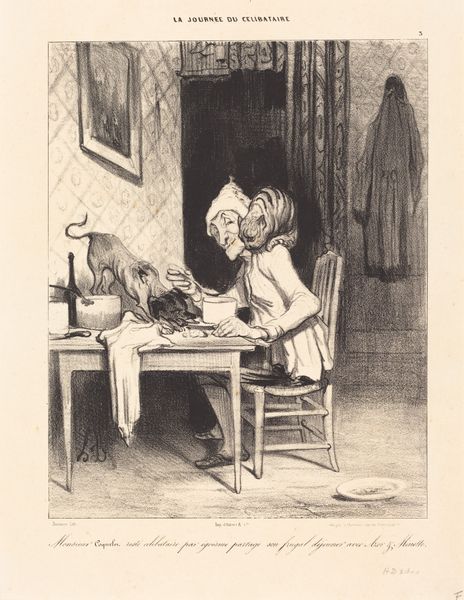
lithograph, print
#
16_19th-century
#
lithograph
# print
#
caricature
#
social-realism
#
genre-painting
#
realism
Copyright: National Gallery of Art: CC0 1.0
Curator: This is Honoré Daumier’s 1847 lithograph, "À la buvette", or "At the Refreshment Bar." Editor: What immediately strikes me is the texture, that scratchy, almost frantic hatching giving such weight to what could be mundane. It communicates a sense of the physical reality of labor itself. Curator: The composition leads our eyes to follow the gaze of the seated women, reinforcing a clear focal point despite the ostensibly chaotic linework. Editor: Exactly. And note how the materials, the ink and stone, are pushed to their limits here. It's not about delicate rendering; it's about the reproduction, dissemination, and consumption of images by the working class. Look at those figures etched into the wall in the background. They represent the artistic impulse of common people, scribbles born from idle moments—definitely not high art. Curator: One can also read those etchings as a commentary on the nature of representation itself. They mirror the forms in the foreground but lack definition, creating a tension between observation and artistic interpretation, echoing classical notions of beauty in everyday scenes. Editor: Beautiful for whom? Look at how the lithographic process democratizes art; each print serves as a document of shared experiences and resistance against the established order. Daumier wasn't simply depicting; he was engaging with a politicized artistic production process, offering glimpses of proletarian aesthetics through mass distribution. Curator: I appreciate how you see the artist subverting conventional processes. It allows the work to critique and deconstruct societal ideals of art and class through its subject and method, reflecting deeper philosophical arguments about visual language. Editor: For me, considering its status as a print multiplies its artistic statement because its easily accessible format makes a statement. I have an elevated sense of the potential power it contains. Curator: Well, for me, considering its interplay of dark and light, figural representation, and context, it presents us with complex observations about humanity through careful artistic consideration. Editor: Precisely! We can both appreciate how it engages with class and structure; this lithograph demonstrates the powerful synergy between social context and visual language.
Comments
No comments
Be the first to comment and join the conversation on the ultimate creative platform.
